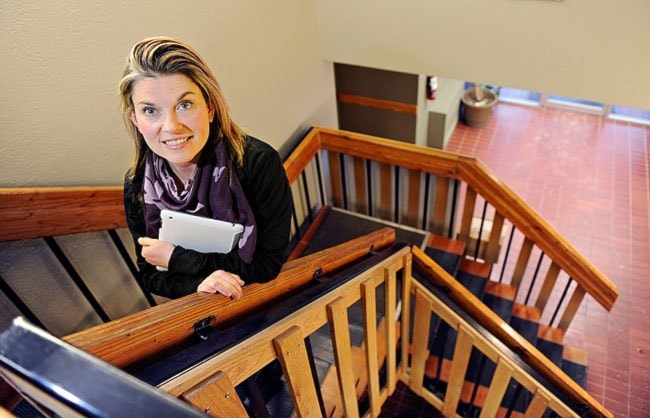Power utilities are bracing for more diesel on the electrical grid and preparing customers for the higher tab.
In 2012, the Yukon’s power demands will outstrip the grid’s hydro supply and Yukon Energy, the main power generator in the territory, will have to spark up its diesel burners again.
The price of making electricity in the Yukon is around 1.5 cents/kilowatt hour when hydro is used. But that jumps to 28 cents/kilowatt hour with diesel.
“We want people to recognize that diesel is coming and we want to send them a price signal,” said Ed Mollard, chief financial officer for Yukon Energy.
Last week, Yukon Energy and the private company that distributes most of the power in the territory, the Yukon Electrical Company, went before their regulator with some ideas.
The Yukon Utilities’ Board held the hearing at Yukon College where intervenors probed the utilities’ proposals on how to deal with the coming diesel price surge.
They submitted a pair of proposals that will cushion customers from having to bear the full brunt of diesel, but are nevertheless a stepping stone toward the full cost going to customers unless other energy sources are built.
The options put forward by the utilities in the meantime revolve around what’s called the runoff rate.
The runoff rate is the rate which most accurately reflects the rising cost of electricity.
Hydro has relatively stable costs. But diesel is a whole different ball game due to fluctuating market prices.
So Yukon Energy and Yukon Electrical presented two scenarios that will hit the heaviest users of electricity with the higher price of diesel.
“The percentage of the runoff rate that the customer pays will depend on the energy they use,” said Mollard.
In option A, residential customers who use less than 1,000 kilowatt/hours a month will have their energy price lowered to 10.9 cents/kilowatt hours.
But their power-thirsty neighbors who use more than 2,500 kilowatt/hours will absorb 80 per cent of new diesel costs, inching their bills up to 22.39 cents/kilowatt hour.
“We think around 20 cents is a good signal to be sending consumers right now,” said Mollard.
Option B is similar except that it offers low-energy users less savings while hitting high-energy users less hard.
A customer using less than 1,000 kilowatt/hours a month would pay 12.14 cents/kilowatt hour while a customer who goes over 2,500 kilowatt/hours a month will pay 13.99 cents/kilowatt hour, reflecting an absorption of 50 per cent of mounting diesel costs.
In both options, there’s a middle price for those who fall between 1,000 and 2,500 kilowatt/hours a month.
But Mollard is quick to point out that most customers stay under 1,000 kilowatt/hours a month, around 70 per cent of all residential customers.
“The majority of the people will see a small rate decrease,” he said.
Yukon Energy originally put out the idea of rewarding low energy users two years ago during a general rate application.
But the board wanted both utilities to do a detailed study of how much electricity costs to produce in the Yukon before playing that much with rates.
After a six-month-long cost-of-service study, which calculates how much each customer category costs to supply with power, both utilities showed up for their rate hearing last week.
“The message is still the same, but after some consultation with various parties - the consumers group, the city and others - the proposal is more refined,” said Mollard.
Yukon Electrical, the distribution company, also wants a new rider to help it cover the cost of diesel.
Throughout the year, Yukon Electrical makes a forecast to Yukon Energy on how much energy it will need to buy, then sell to customers.
But if its forecasts are low and it ends up buying more power, it gets hit with those extra costs.
That can be pricey, especially if it’s diesel.
Yukon Electrical wants to put a rider on people’s bills so they pay for those inaccurate forecasts.
If the board accepts Rider D, as it’s being called, it would only appear on the bills of people living on the Whitehorse-Aishihik-Faro grid in southern Yukon.
That’s the only part of the territory where Yukon Electrical buys power from Yukon Energy for distribution.
The board hasn’t scheduled a date for its decision on the proposals.
But Yukon Energy is hopeful its options are better than letting rates adjust when diesel is being burned, said Mollard.
“If I wait until then, I’ve got to hit (customers) hard all at once,” he said.
Contact James Munson at
jamesm@yukon-news.com
